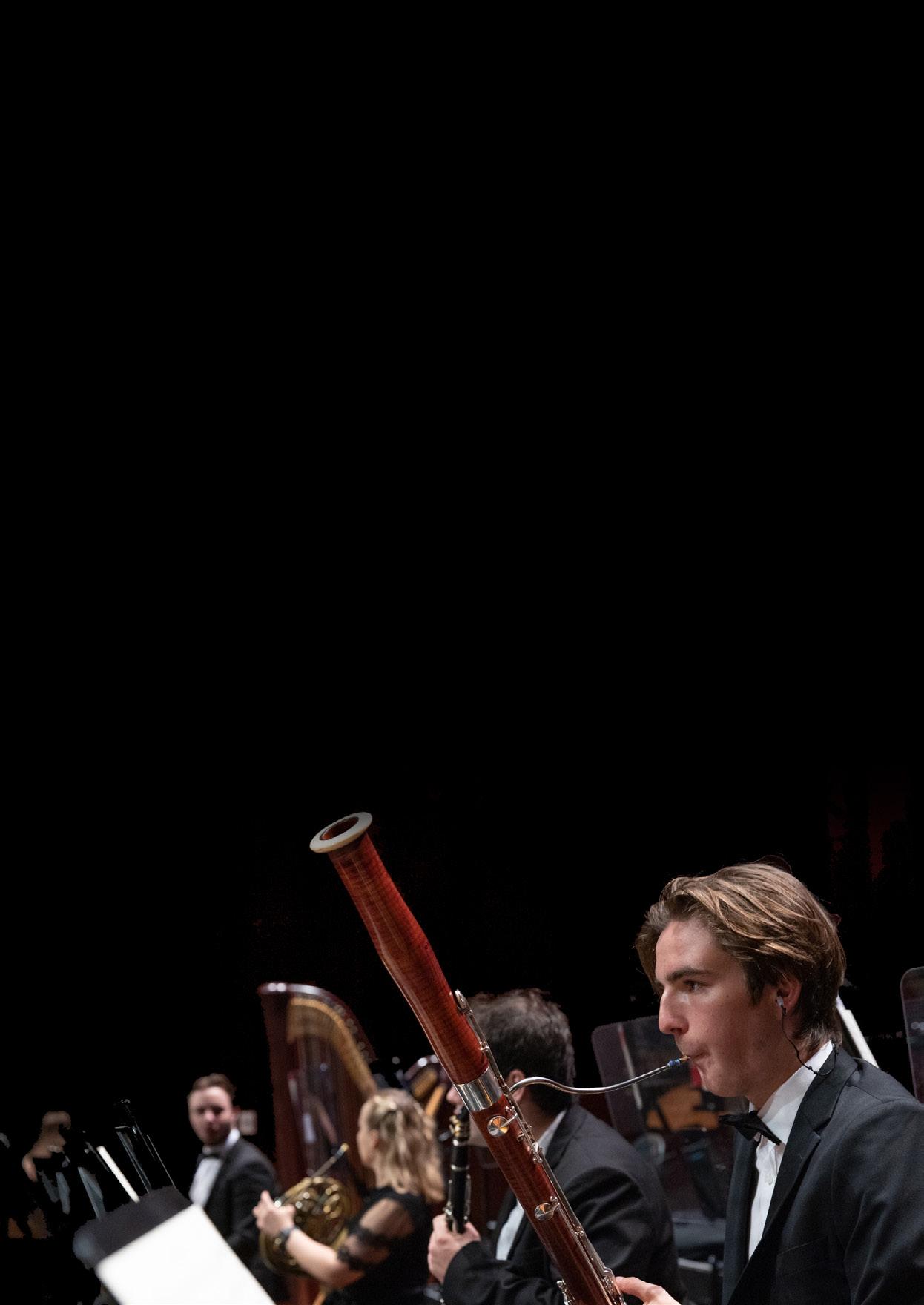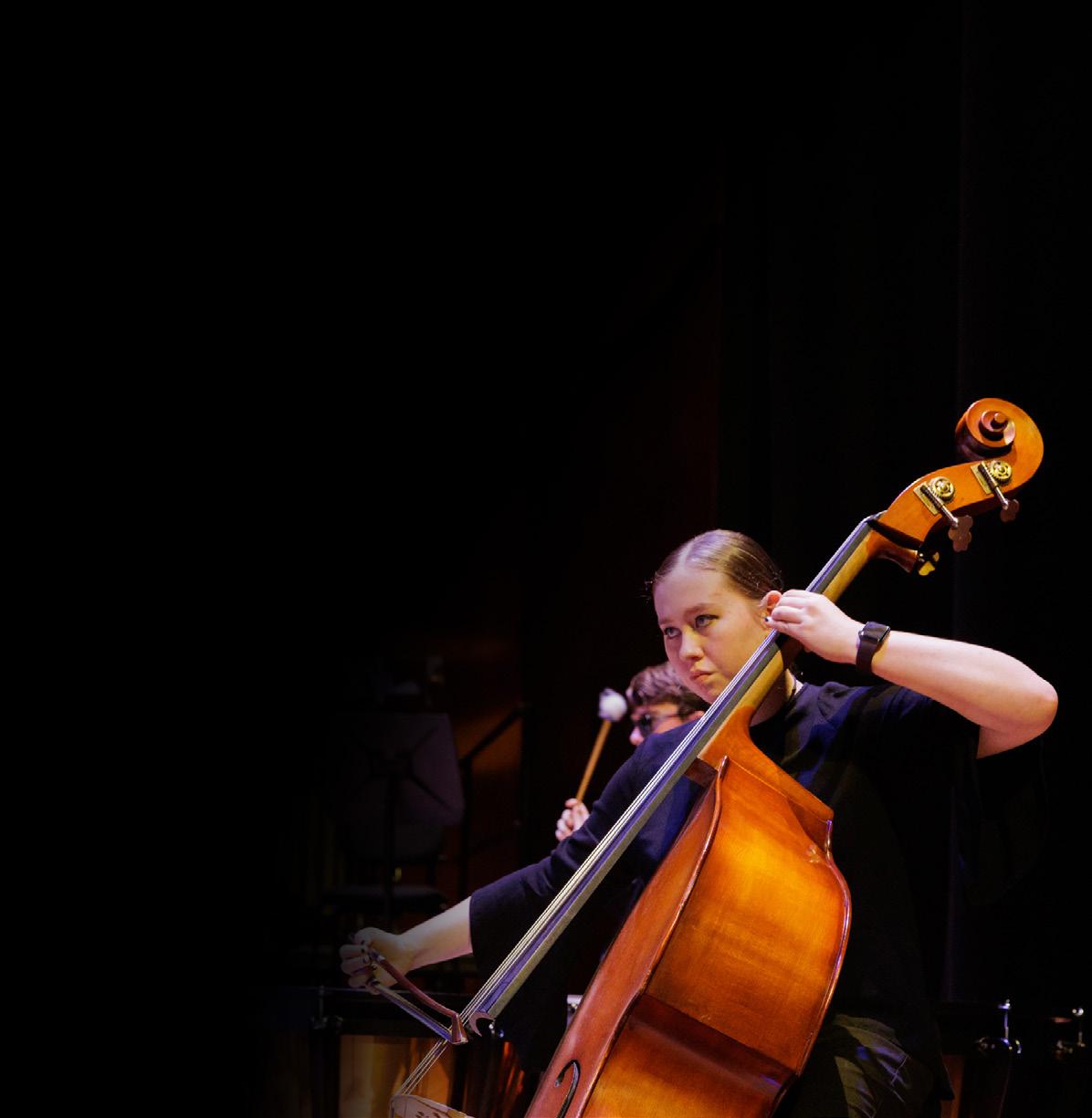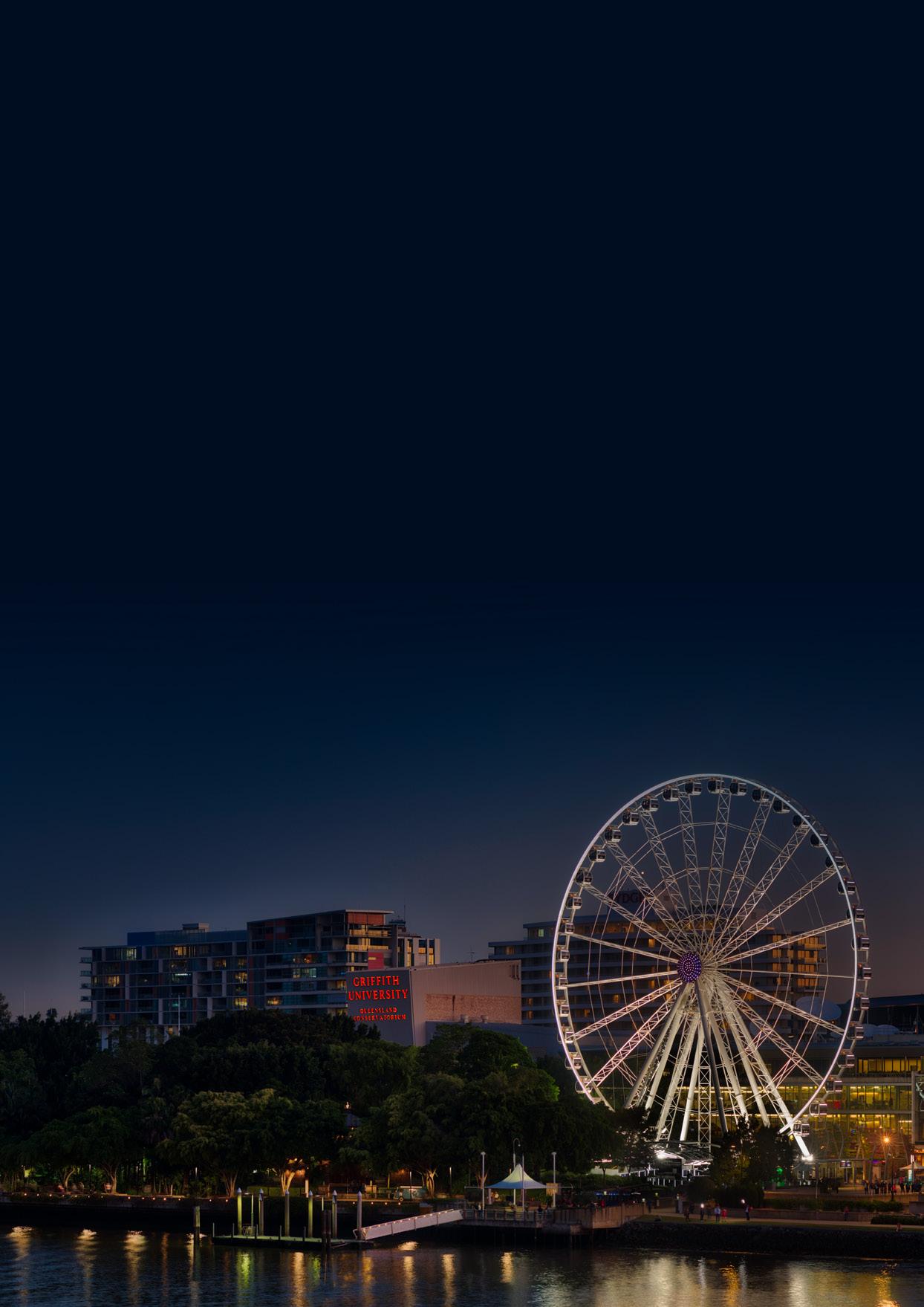




Bernstein was an American conductor, composer, and pianist noted for his accomplishments in both classical and popular music, for his flamboyant conducting style, and for his pedagogic flair, especially in concerts for young people.
A shivaree (a corruption of the French word Charivari) is a noisy mock serenade performed by a group of people to celebrate a marriage or mock an unpopular person. Bernstein’s fanfare for double brass ensemble and percussion was commissioned by and dedicated to the Metropolitan Museum of Art in New York in honour of its Centenary in 1969. Bernstein's Shivaree was commissioned for the exhibit "Before Cortes: Sculpture Of Middle America".
This discordant serenade with pots, pans and other noise makers is intended as a jest. The two main musical ideas of the work appeared two years later as God Said (the "Gospel-Sermon") and the Prefatory Prayers (from the "First Introit") of MASS.
D’un matin de printemps (Of a spring morning) by Lili Boulanger (1917) arranged by James Hontz (2021)*
It was in her final winter days when Lili Boulanger imagined a piece brimming with life for violin, cello and piano that was quickly transcribed for orchestra. Unlike many of her other works, which are darker in character and harmony, D’un Matin de Printemps is full of a fresh, joyful character that contemplates the soft spring sunshine. The music alternates between feelings of liveliness, joy, mystery, curiosity, contemplativeness, pain, and nuances in between.
Above all, the work exudes a vibrant energy that hides the fact that its composer was mere months away from her death. James Hontz’s arrangement brings this beautiful work to life for the wind orchestra.
‘As Ruby Goes Away’ is a three-movement work that is a representation of the last moments of the life of a terminally ill child named Ruby. Through three separate movements, this piece travels through a mixture of emotions evolving around her. With moments of suspense, joy, anger and sorrow; a dramatic ride towards death is yet to start…
Radithya is currently in his second year of composition studies at the Queensland Conservatorium Griffith University, and this is his first large work for the wind band genre.
“Ruby’s final battle” from As Ruby Goes Away by Radithya Budi Theomarga (2022)^
Featuring Abbey Schumacher on solo baritone saxophone
Le Papillon qui tapait du pied is one of the twelve tales featured in Just So Stories by Rudyard Kipling (1865–1936) which still delight, with their comically and poetically elevated style. They are enchanting tales about animals in India and Africa, initially written for Kipling’s daughter, Josephine, who died during an outbreak of influenza in 1899.
Inspired by this tale, French composer, Maxime Aulio uses his impressionistic style to pair instruments with specific characters. The Baritone Saxophone solo embodies King Solomon, Son of David; the Flutes play the pair of butterflies; a Clarinet is the wise Balkis ‘the Most Beautiful’ of Sheba. In contrast, the Trumpets and Cornets personify the mischief-making Djinns. The characters move in a marvelous orchestral setting in the image of King Solomon’s palace and gardens.
Suite of Old American Dances was inspired by a concert in Carnegie Hall by the legendary Goldman Band. Composer Robert Russell Bennett wrote, “I suddenly thought of all the beautiful sounds the American concert band could make that it hadn’t yet...[Those sounds] were so new... after all my years with orchestra, dance bands and tiny combos that my pen was practically jumping out of my pocket begging me to give this great big instrument some more music to play.”
“[It was] published [as] Suite of Old American Dances ... My name for it was Electric Park, [after the Kansas City amusement that] was a place of magic to us kids. The tricks with big electric signs, the illuminated fountains, the big band concerts, the scenic railway and the big dance hall—all magic. In the dance hall all afternoon and evening you could hear the pieces the crowds danced to, and [my] five movements were samples of the dances of the day.”
At the time, Sinfonietta was considered to be a thoroughly modern work that now stands as a cornerstone work of wind band literature. It retains a sense of humour, despite the composer's usage of serialism and other modern techniques of the day. Dahl starts and finishes the work in the often perceived "band" key of B-flat, and there are references to marching bands throughout.
The composer states:
“When I received a commission to write a work for band, there were many things to be considered. First of all, I wanted it to be a piece full of size, a long piece, a substantial piece—a piece that, without apologies for its medium, would take its place alongside symphonic works of any other kind.
But, in addition, I hoped to make it a ‘light’ piece, something in a serenade style, serenade tone, and perhaps even form. This was the starting point.
You will remember that in many classical serenades the music begins and ends with movements which are idealised marches, as if the musicians were to come to the performance and then, at the end, walk off again. This was a strong tradition, and it was this tradition which motivated at least the details of the beginning and ending of the Sinfonietta. The quiet beginning, the backstage trumpets, and at the very end an extremely quiet ending with backstage trumpets—this is the form of the work.”
Born in Germany of Swiss parents, Dahl became a refugee during World War II and eventually denied his Jewish heritage. He had a varied musical career as a solo pianist, keyboard performer (piano and harpsichord), accompanist, conductor, coach, composer, and critic. He also produced performing English translations of works by Schoenberg, Stravinsky and in later life, produced musical arrangements for Tommy Dorsey and served as arranger/conductor to Victor Borge.
The title, Circuits, is meant to characterise several important aspects of the work's musical language. Key elements include: a strong reliance upon circuitous structures such as ostinatos; the use of a formal design incorporating numerous, recurring short sections; and the presence of an unrelenting, kinetic energy. These elements combine with jazz elements and the playful manipulation of musical materials using syncopation, sudden transposition, and juxtaposition. Cindy McTee is an American born composer and educator based in Missouri. Hailed by critics as a composer whose music reflects a “charging, churning celebration of the musical and cultural energy of modern-day America,” Cindy McTee “brings to the world of concert music a fresh and imaginative voice.”
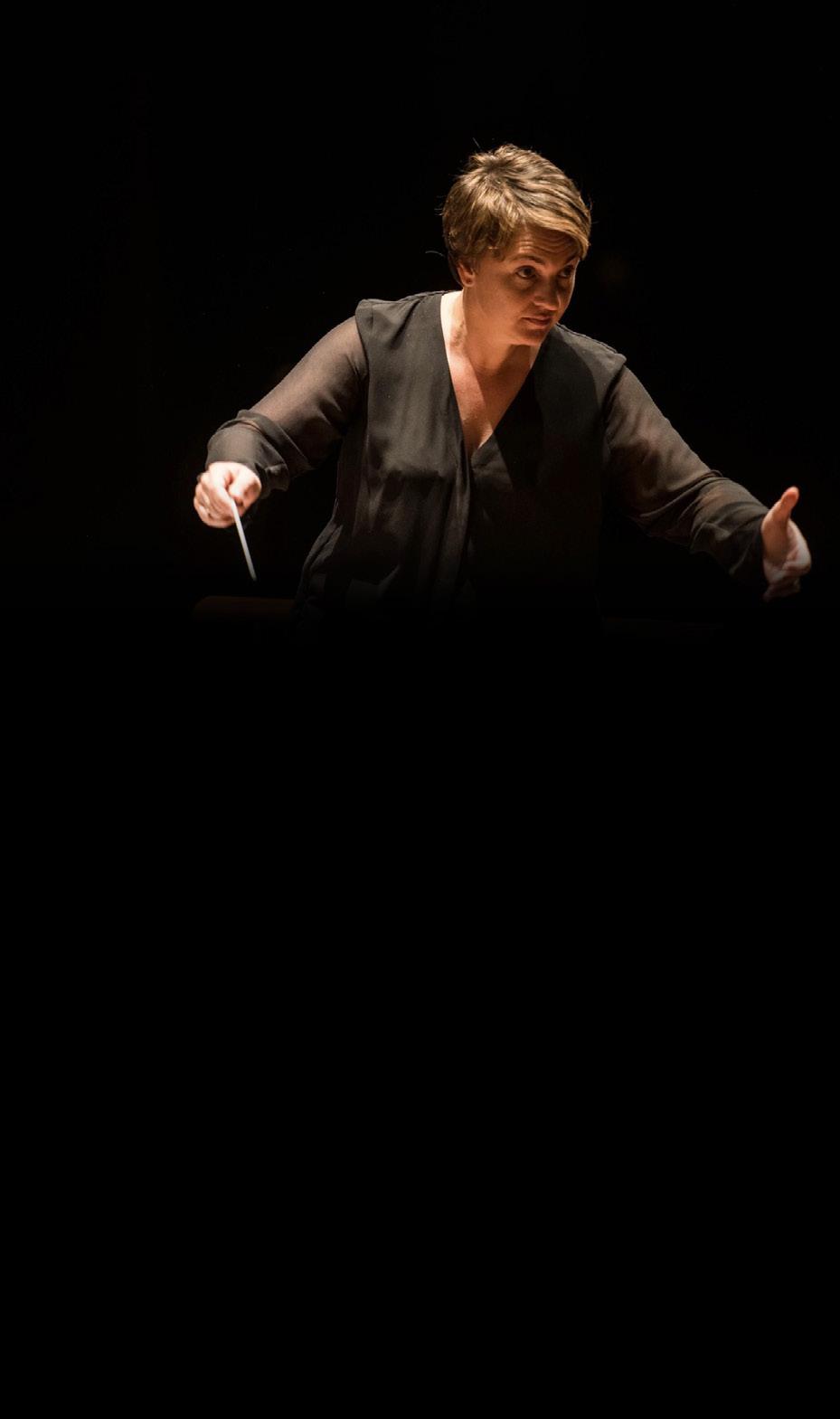
Stefanie Smith is a freelance conductor and educator based in Brisbane where she works regularly with Queensland Symphony Orchestra undertaking a broad range of duties. She also works with the Brisbane Philharmonic Orchestra, Brisbane Symphony Orchestra and other ensembles across the state.
Stefanie has acted as assistant conductor for the Opera Beatrice and Benedict and as a sessional academic at the Queensland Conservatorium Griffith University where she assists with conducting duties with the Symphony Orchestra and Wind Orchestra and teaches the undergraduate conducting courses.
She is the founder and conductor of the ensemble Consorte Eclettica, which supports emerging local artists in SouthEast Queensland, premiering and performing chamber orchestra works in collaboration with other art forms. As a DMA candidate at Queensland Conservatorium Griffith University, Stefanie is researching the careers of emerging Australian conductors. Stefanie has participated in the Australian Conducting Academy with the Tasmanian Symphony Orchestra and Johannes Fritzsch as well as conducting masterclasses with Larry Rachleff (Rice University, USA) and maestro Benjamin Zander at the London Master Classes Conducting Course, with members of the Royal Northern College of Music. She is also the Young Conservatorium Ensemble Coordinator where she conducts the Symphony Orchestra, Wind Orchestra, and Woodwind Ensemble and teaches Chamber Music.
Radithya Budi Theomarga is an Indonesian composer in his second year of a Bachelor of Music in Composition degree at QCGU under the tutelage of Gerard Brophy. He has been passionate about music since he was a kid and started focusing on composing during high school. In the QCGU community, he has premiered a few pieces throughout the past two years at different concerts, including his piece at the Enactus MUSE concert earlier this year. He has also released compositions to digital platforms, varying from contemporary jazz to pop music. Radithya is especially fond of Neo-Classical and film music, and he is looking forward to engaging in potential film projects soon. Overall, he is keen to actively contribute his music towards the concert hall and film industry.
Abbey Schumacher is an aspiring woodwind multi-instrumentalist based in Brisbane.
A passionate performer, Abbey regularly plays in pit orchestras in theatres across Brisbane and the Gold Coast. She continues to develop her playing as a 3rd year Bachelor of Music candidate, studying classical saxophone under the tutelage of Dr Martin Kay.
The Conservatorium Wind Orchestra has enjoyed a long history of exciting and definitive performance, as one of Australia’s premier wind, brass and percussion ensembles. Under the leadership of Peter Morris, the ensemble continues to evolve within the ever-changing trajectory of this relatively new art form.
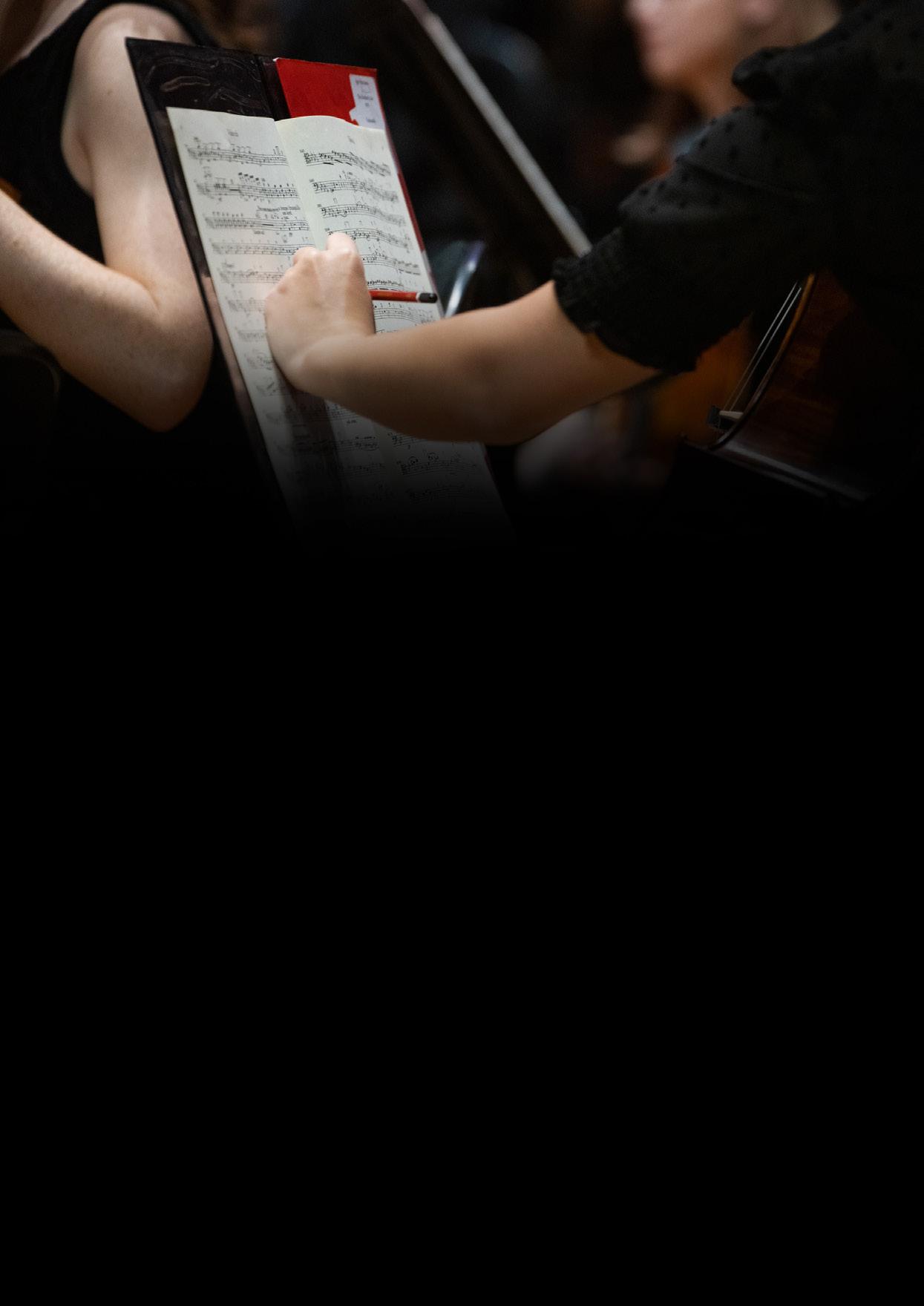
The Conservatorium Wind Orchestra continually strives to set the benchmark for performance across the nation presenting a vast scope of repertoire from time honoured masterworks to contemporary works from across the globe and innovative new commissions from local Australian composers. This ensemble’s focus extends far beyond the walls of the Conservatorium, enriching and supporting the local community of composers, conductors, educators and school students. This development of new repertoire and focus on professional development for all who participate in this evolving art form continues to be an exciting pedagogical focus of the Wind Orchestra.
